This recipe is super simple, as most pork recipes should be. A little bit of dijon, some honey, a little garlic, and some basic seasoning and you have a wonderful dish. In this recipe, we have used whole grain dijon. We love both the flavor and look of it. You can use regular dijon mustard if that is what you have, but the whole grain is beautiful and offers a bit more of a subtle mustard flavor.
What if I don’t have an oven-safe skillet?
This recipe calls for you to sear your meat first on a stovetop, and then finish cooking in the oven. The most convenient way to do this is by using an oven-safe skillet, like cast iron. If you do not have an oven-safe skillet, place an oven-safe baking pan into the oven and preheat it. Once your meat has been seared on the stovetop, simply place it into the hot pan in the oven to finish.
Can pork be pink in the middle?
Pork is a red meat, despite the very famous and influential marketing campaign with the slogan “pork: the other white meat.” This campaign combined with a temporary period where it was recommended to cook pork longer due to a food safety issue has led to a lot of confusion about what temperature pork needs to be cooked to and if it can still be pink in the middle. Pork tenderloin in particular is a darker cut of pork, similar to how ham is a darker cut and is always a nice rosy hue no matter how long you cook it. Pork tenderloin will have a rosy hue when cooked to the correct internal temperature of 145 degrees Fahrenheit. Even at temperatures of 165 degrees and beyond, tenderloin may still have a rosy hue to the center. It is best to cook pork tenderloin by temperature rather than by color, otherwise, you have a high risk of drying out the meat.
What internal temperature does pork tenderloin need to be cooked to? How long will that take?
Pork tenderloin needs to be cooked to a minimum internal temperature of 145 degrees Fahrenheit. The best way to get there is to use a meat thermometer. That way you can avoid undercooking, and more importantly, you can avoid overcooking your meat and drying it out. The cooking time is just an estimate and will vary depending on the size and thickness of your particular cut. You know how you see different weights of cuts in the store? Well, that’s because every cut is slightly different in its size and thickness which means the cooking time is going to be slightly different as well. Watch the video below where Rachel will walk you through every step of this recipe. Sometimes it helps to have a visual, and we’ve always got you covered with our cooking show. You can find the complete collection of recipes on YouTube, Facebook Watch, or our Facebook Page, or right here on our website with their corresponding recipes.
Easy Baked Pork ChopsApple Glazed Roasted Pork LoinPerfectly Juicy Grilled Pork TenderloinGarlic Butter Pork TenderloinEasy Smothered Pork Chops
Δ Δ
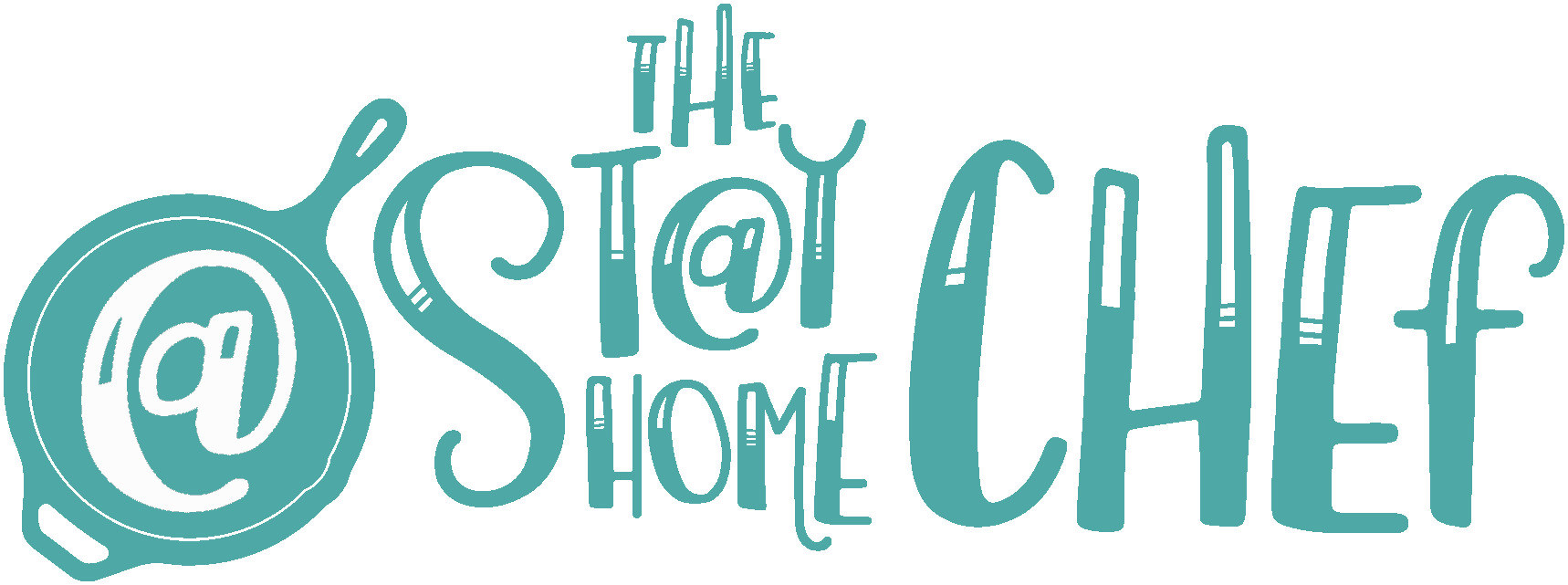
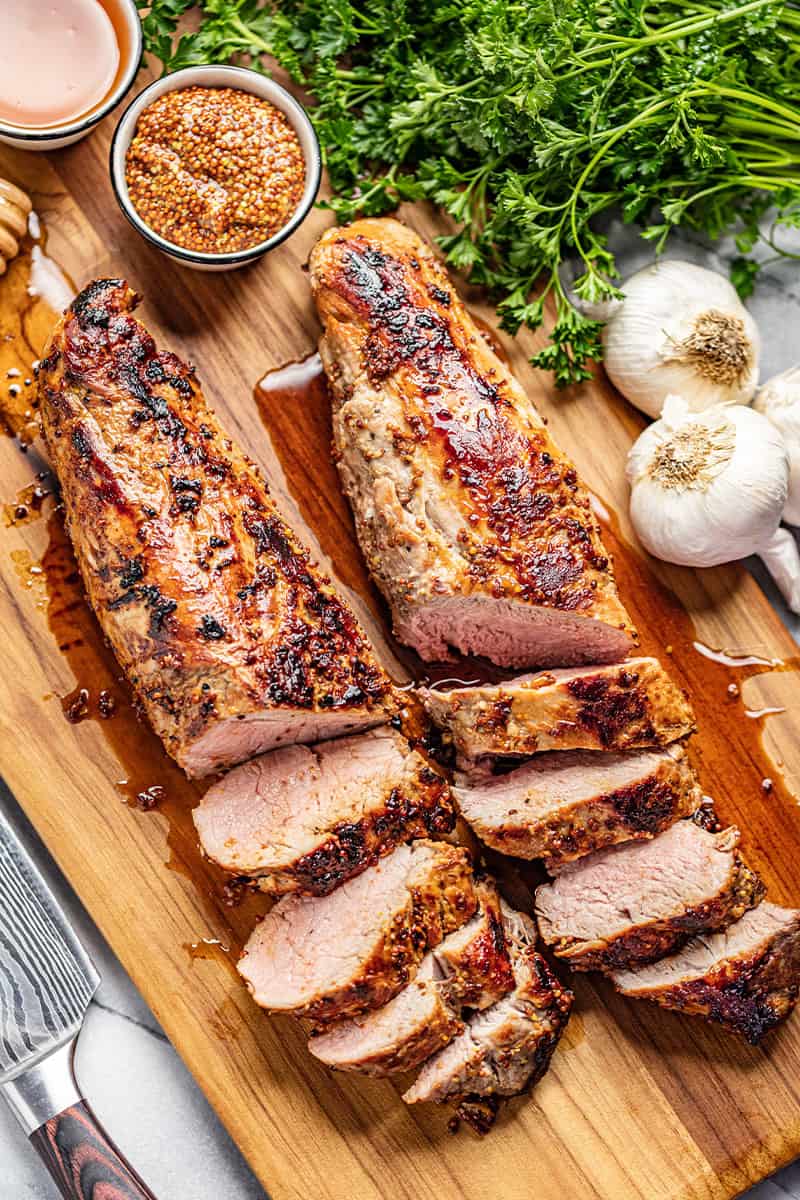
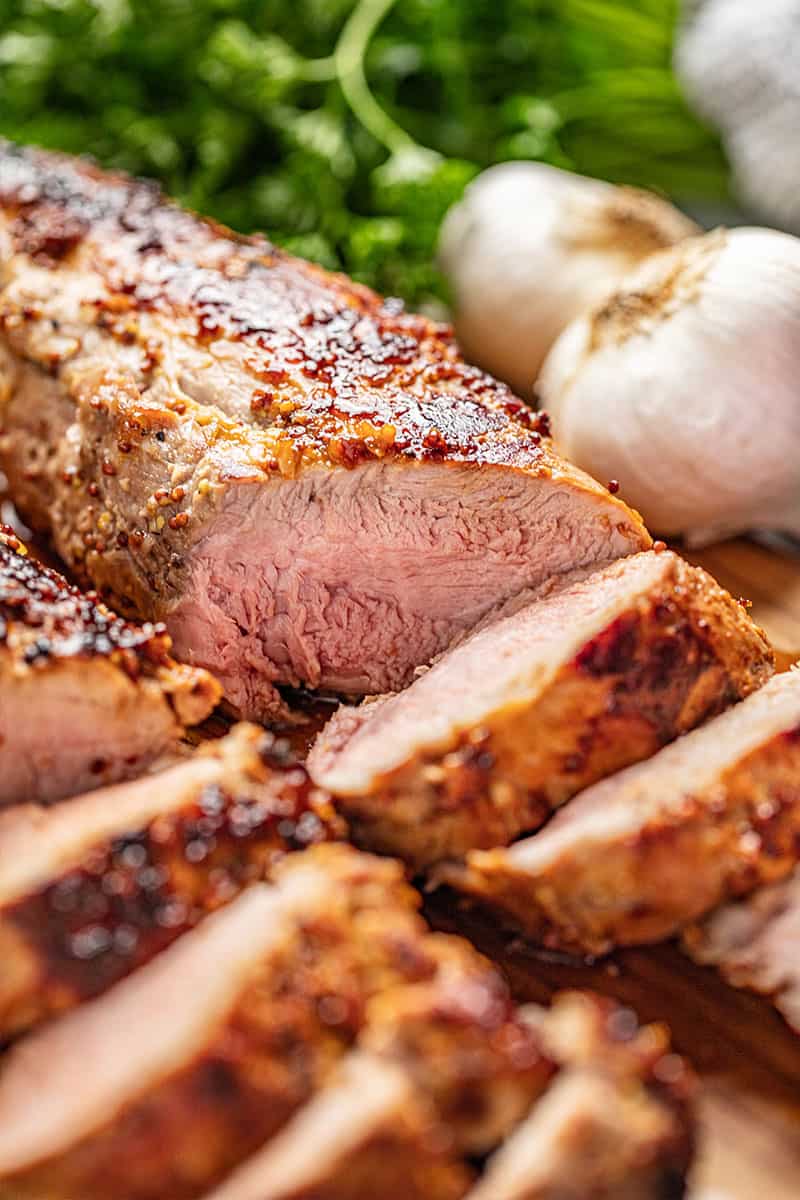
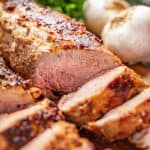
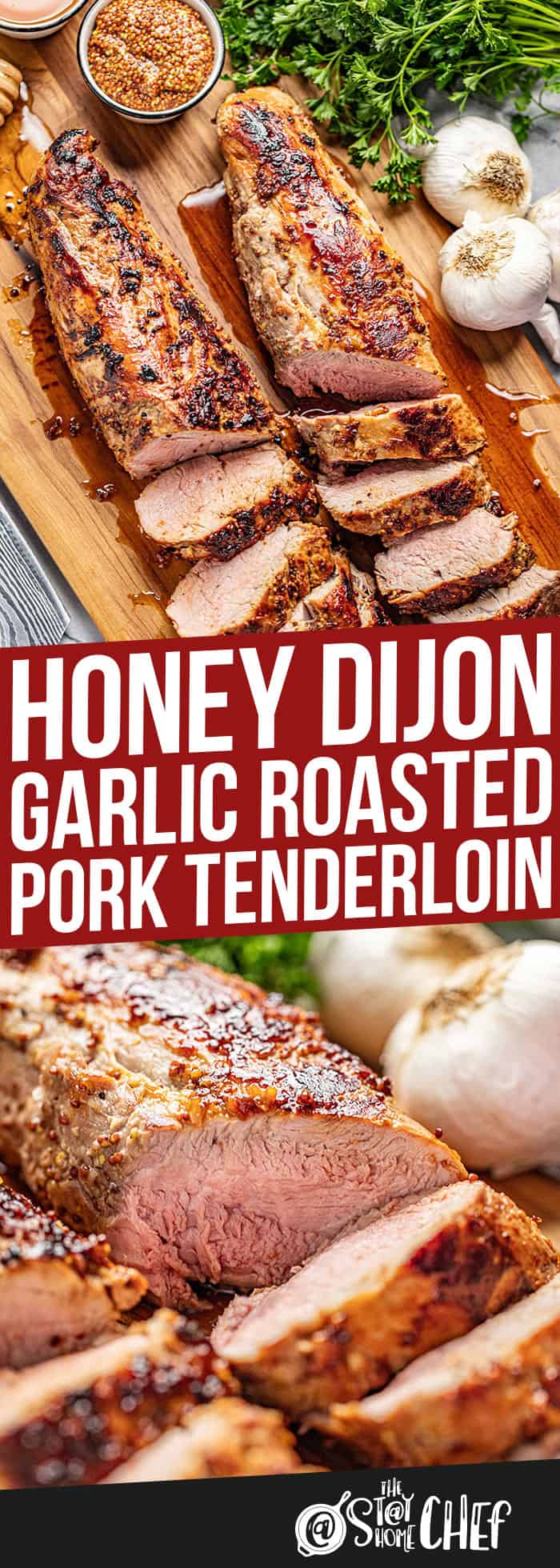

![]()